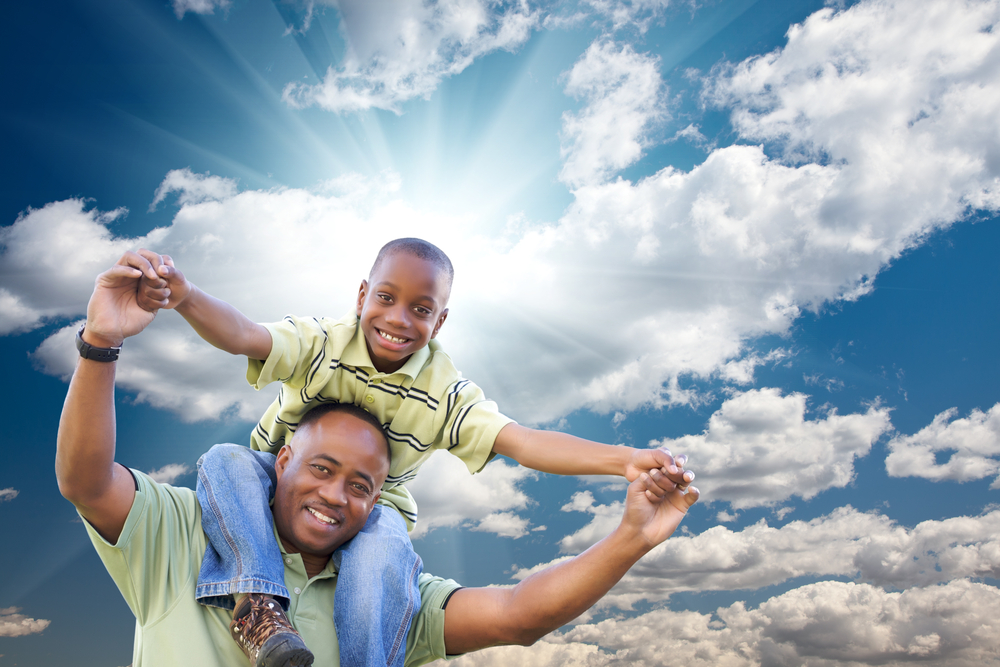Did you know that simple, active play helps your child’s development? It’s true. In addition to basic fitness, active play improves concentration, coordination, learning, social skills and much more. Though your family may already have some favorite activities, see below for more ideas and how they help with development.
Play Ball
It’s easy to see how a game of catch can improve hand-eye coordination. Ball play also helps with reasoning, balance and vision. It also accomplishes the diffi cult task of eccentric strengthening (strengthening with a controlled release rather than lifting) of large and small muscle groups.
Tips: Mix it up. Try balls of diff erent sizes, textures and weights. Add a Frisbee or an American football into the mix. Rather than tossing back and forth, throw or kick to a target. Get sporty: dribble a basketball with the hands or a soccer ball with the feet, swing the baseball bat or the hockey stick, even work in a game of golf. Children of any age are welcome on the Rolling Hills Golf Course in Baumholder accompanied by a responsible adult. Club rentals are available for players as young as three; teens 16 and up can golf on their own. The Woodlawn Golf Course accepts children six and over with their parents. Skills mastered now will prepare your child for team sports later.
Ride A BikeMintImages / Shutterstock.com
Many German communities have special trails and courses for bikes and pedestrians. While there are obvious strength and endurance benefits from
bicycling, riding a bike can aid your child’s development in other areas too. Cyclists learn to navigate their communities and care for their equipment. Bicycling is a pre-driving skill as riders learn the rules of the road.
Tips: Look over a map and include your child in planning the route. As children gain experience, see if they can orient to home and other familiar landmarks to improve memory, perception and sense of direction. Being involved in bike maintenance and use of personal safety equipment teaches responsibility, safety, and self-awareness.
Take A Hike
We live in an area rich with hiking trails of many lengths and diffi culty levels. In addition to the physical benefits, children learn about themselves and their surroundings when hiking. Because most hikes are low-impact, hiking can incorporate other interests like photography, nature, and history.
Tips: Challenge your child by incorporating side stepping, braiding, or walking backward on the trails. Performing these uncommon motions on uneven surfaces challenges not only coordination but proprioception (knowing where your body is in space) and vestibular (balance) skills. Incorporate learning into your hikes – study plants, weather, bugs, towns… the possibilities are endless. Add a challenge such as a kilometer goal or a certain number of castle ruins to explore. Check out the many barefoot walking trails in the area for warmer months. For older children, consider hiking longer and more challenging routes or even hut-to-hut hiking in the Alps.
Fun And Games
Laughter, logic and leadership go hand and hand with play. So, jump rope, hula hoop, or pass out the swim noodles and play tag. Overcome obstacles by designing your own obstacle course with everyday items. In addition to balancing, inclines and declines, add stepping on pillows or other soft surfaces to part of the course. This is another way to challenge balance, proprioception and vestibular senses. If the weather won’t cooperate, design an obstacle course inside.
Tips: Let children make-up games, explain the rules, and keep score. Have them design, plan, and build the obstacle courses (check for safety, of course.) Try an outdoor ropes course or go climbing and bouldering. The climbing wall at Outdoor Recreation in the KMCC Mall welcomes families and children as young as two-years old to climb, though they must be sixteen to belay (manage the ropes to support another climber.) Most of all, join in! Kids aren’t the only ones who benefit and learn from active play!
About the author: Angela Cerrito is a pediatric physical therapist and a writer. When researching her children’s novel, The Safest Lie,
she interviewed Irena Sendler, who rescued 2,500 children from the Warsaw ghetto. The Safest Lie was named a Guardian Best Book
of the Year and a Notable Social Studies Book by the Children’s Book Council and the National Council for Social Studies. www.angelacerrito.com
Looking for toys that can further help your child learn? Click on the guide below to find toys for every stage of your child’s development.
Created by www.babydepotusa.com”>BabyDepotUSA
